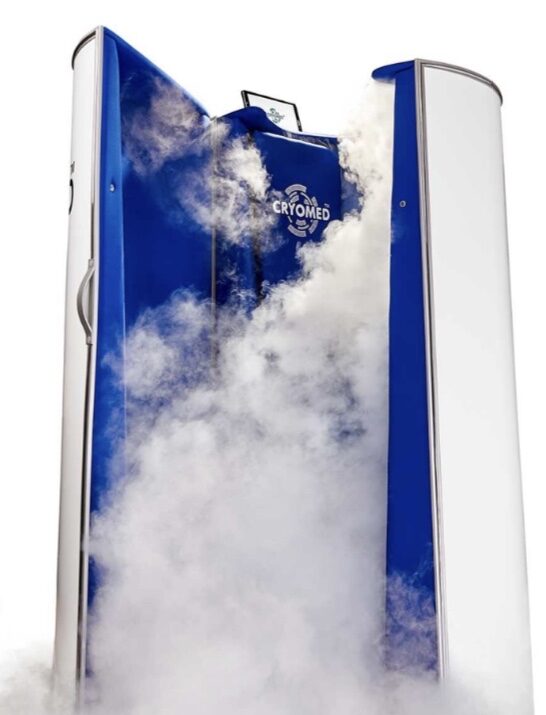Skin
The outer skin is briefly ‘frozen,’ activating increased production of collagen in deeper layers of the skin (similar to lasers treatments of the face, where very hot temperatures are used). The skin regains elasticity and becomes smoother and even-toned, significantly improving conditions such as cellulite and skin aging. Skin vessels and capillaries undergo severe vasoconstriction (to keep the core temperature from dropping), followed by vasodilation after the procedure. Toxins and other stored deposits are flushed out of the layers of the skin and blood perfusion is improved after several treatments. The anti-inflammatory properties of cryotherapy are also used to treat chronic skin conditions such as psoriasis and dermatitis.
Endocrine
The extreme cold exposure causes to the body to turn up its metabolic rate in order to produce heat. This effect usually lasts for 5-8 hours after the procedure, causing the body to ‘burn’ increased Kcal over the hours following the procedure. After several procedures, the increase in metabolic rate tends to last longer between treatments. Another ‘survival reaction’ to the extreme temperatures is the release of endorphins (hormones) that have analgesic and anti-inflammatory properties, and improve mood disorders. Cryotherapy has been studied for the successful treatment of medication resistant depressive disorders. Patients furthermore experience a noticeable increase in libido, lending to the use of cryotherapy for ED and other sexual disorders.
Musculoskeletal
The anti-inflammatory and analgesic properties of cryotherapy can drastically improve joint disorders such as rheumatoid and osteoarthritis. Athletes are using whole body cryotherapy to recover from injuries and improve their performance.
Immune System
Cryotherapy can improve the function of the immune system and decrease stress levels. Including inflammatory conditions such as arthritis and fibromyalgia.





